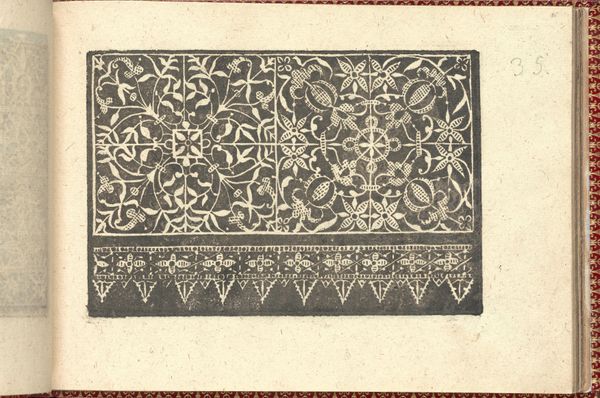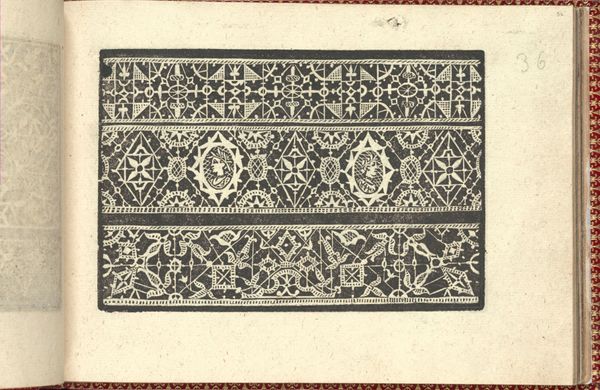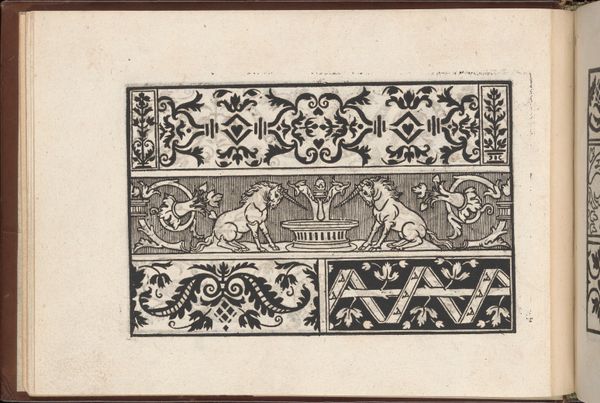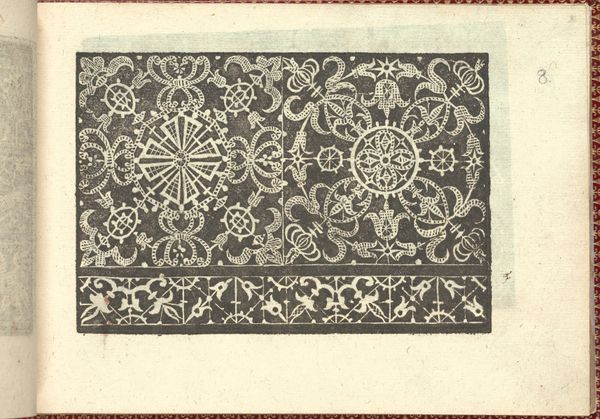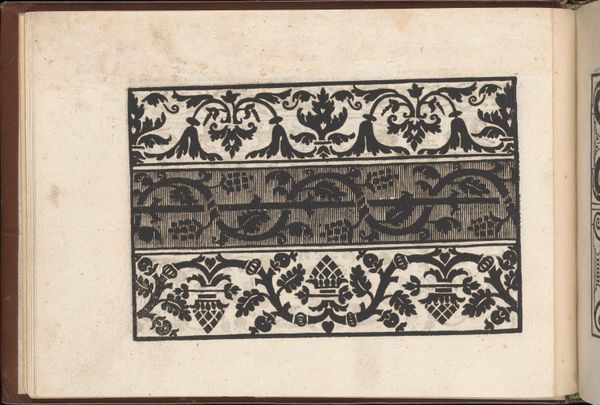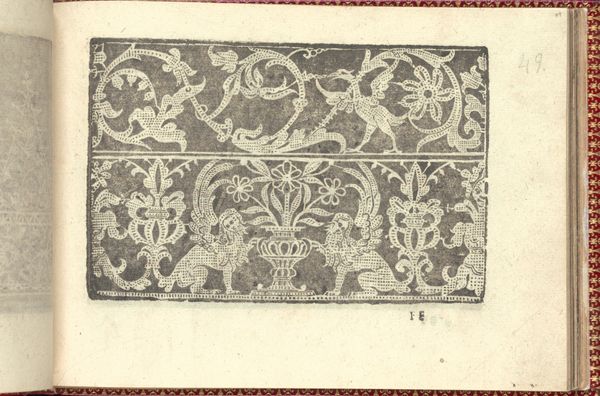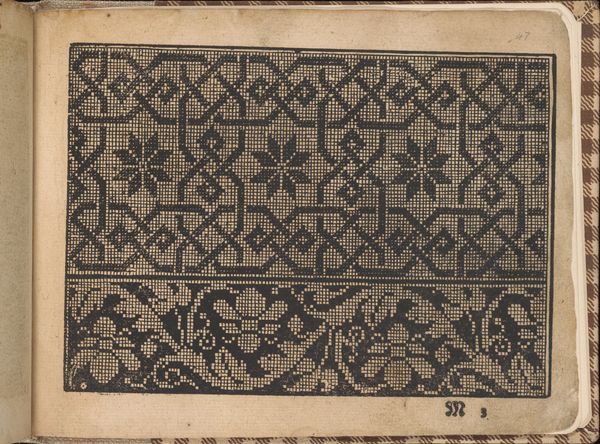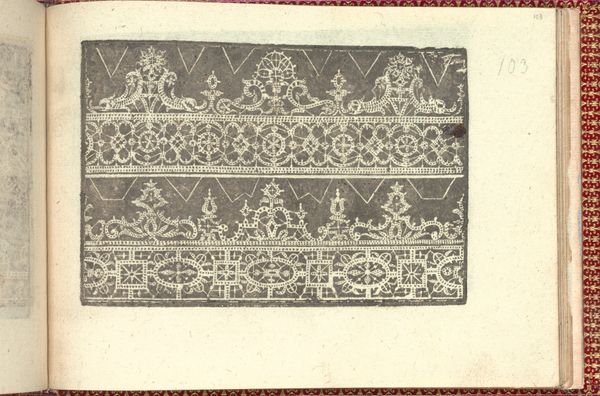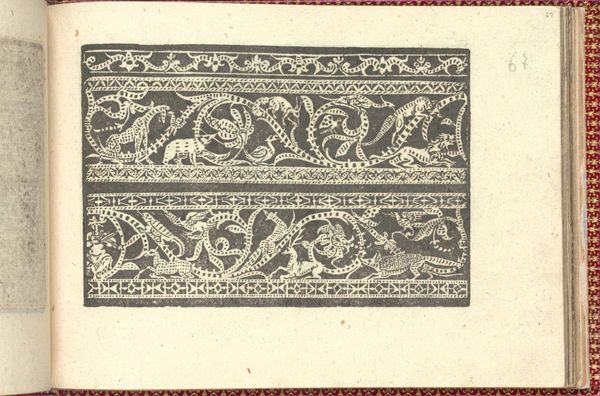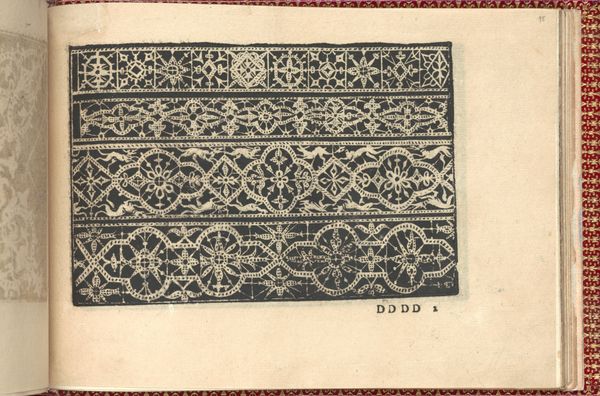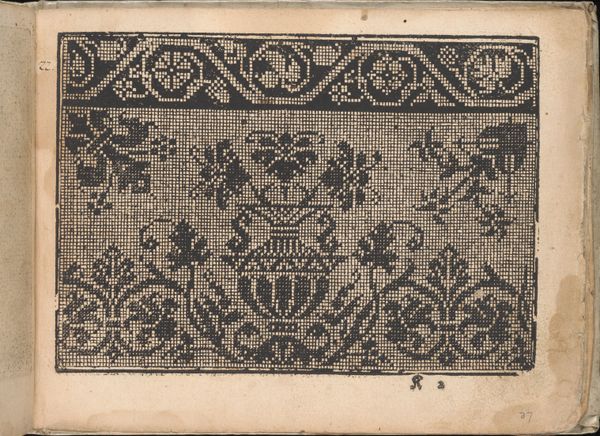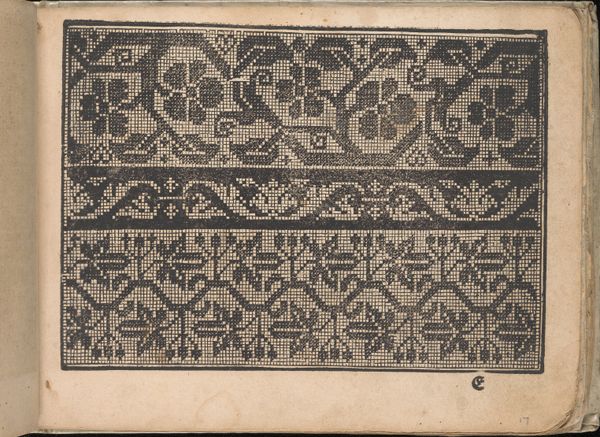
Corona delle Nobili et Virtuose Donne: Libro I-IV, page 7 (recto) 1601
0:00
0:00
drawing, print, woodcut, engraving
#
drawing
# print
#
11_renaissance
#
woodcut
#
engraving
Dimensions: Overall: 5 1/2 x 7 11/16 in. (14 x 19.5 cm)
Copyright: Public Domain
Curator: Looking at this page, what catches your eye first? Editor: The stark contrast. The bold black ink against the parchment, it's incredibly striking and seems so… deliberate. Almost harsh. Curator: That's a fair point. This is page seven from Cesare Vecellio’s "Corona delle Nobili et Virtuose Donne," dating back to 1601. He made extensive use of drawing, printmaking, engraving, and woodcut techniques here. Notice the almost tapestry-like organization. Editor: Tapestry is the right word! The structure almost divides it into friezes. Are those hunting scenes? It feels almost medieval, the flat perspective, the repetition. Curator: Precisely! Vecellio, see, worked in a Venice that was commercially expansive and had very well-developed craft traditions. His focus in the entire "Corona" series was representing the fashions and material culture related to noblewomen, making production choices that would give those materials high prominence and allow wider audiences. Editor: So it is essentially a craft item trying to celebrate other artisanal techniques, with the material itself having that tension. Curator: Exactly, the woodcut is relatively simple but efficient at disseminating a vast number of ideas relating to fashion and decor, but each choice—animal or embellishment pattern—speaks volumes in terms of period sensibilities and social aspiration. Editor: Yet there is also, within those restrictions, elegance to this. See the mirrored effect—each frieze balances on either side. Curator: Good observation. And the limited materials don't hold back the expressive energy—it reflects Vecellio’s engagement with period fashion as more than mere surface embellishment, doesn't it? Editor: It most certainly does. Looking closely, the image’s austere nature brings that element forward, offering an interesting view into that era. Curator: It adds layers of meaning. Every element feels thoughtfully employed to evoke not just fashion but an entire culture of production.
Comments
No comments
Be the first to comment and join the conversation on the ultimate creative platform.
